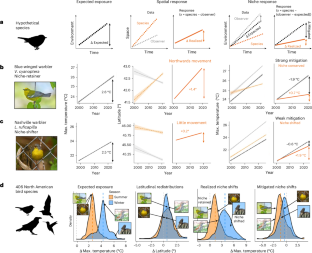2025-05-29 アメリカ国立衛生研究所(NIH)
米国国立衛生研究所(NIH)の研究チームは、難治性がん性疼痛に対する新たな治療法として、植物由来分子レジニフェラトキシン(RTX)を用いた臨床試験を実施しました。RTXは、北アフリカ原産のトウダイグサ属植物から抽出される非依存性の鎮痛剤で、TRPV1イオンチャネルを活性化し、痛み信号を伝達する神経線維を選択的に不活性化します。
この試験では、進行がん患者にRTXを腰椎穿刺を通じて脊髄液に単回注射し、最悪時の痛みの強度が38%減少、オピオイド使用量が57%減少するなど、即時かつ持続的な鎮痛効果が確認されました。治療後、患者はオピオイドによる鎮静状態から解放され、日常生活への復帰が可能となりました。
RTXは、他の慢性疼痛疾患や神経障害性疼痛、手術後の痛み、三叉神経痛、頭頸部放射線治療後の慢性口腔炎症などへの応用も期待されています。現在、米国食品医薬品局(FDA)の承認に向けたさらなる大規模臨床試験が進行中です。
<関連情報>
- https://www.nih.gov/news-events/news-releases/nih-scientists-pioneer-promising-treatment-intractable-cancer-pain
- https://evidence.nejm.org/doi/full/10.1056/EVIDoa2400423
レジニフェラトキシンによる難治性癌性疼痛の治療-中間的研究 Treatment of Intractable Cancer Pain with Resiniferatoxin — An Interim Study
Andrew J. Mannes, M.D., John D. Heiss, M.D., Ann Berger, M.D., Christine C. Alewine, M.D., Ph.D., John A. Butman, M.D., Ph.D., Marybeth S. Hughes, M.D., Nusrat Rabbee, Ph.D., Christina Hayes, C.R.N.P., Tracy S. Williams, B.S.N., Matthew R. Sapio, Ph.D., and Michael J. Iadarola, Ph.D.
NEJM Evidence Published: May 27, 2025
DOI: 10.1056/EVIDoa2400423
Abstract
Background
A substantial number of patients with advanced cancer suffer from refractory pain despite comprehensive medical management. In this article, we evaluate a nonopioid analgesic, resiniferatoxin (RTX), a potent agonist of the transient receptor potential vanilloid 1 (TRPV1) ion channel, which selectively interrupts nociceptive activity transmitted by a subpopulation of dorsal root ganglion neurons.
Methods
In this interim analysis of a first-in-human, open-label, Phase 1 study, 19 patients with refractory cancer pain localized to the abdomen and/or lower extremities received one dose of intrathecal RTX. The primary outcome was safety. Secondary outcomes were efficacy assessed over the course of the study using a numerical rating scale measuring the “worst pain” over a 24-hour period. This is a 0 to 10 scale where 0 is “no pain” and 10 is the “worst pain imaginable.” Opioid consumption was measured as morphine equivalents used to control pain.
Results
Over 188 days after RTX injection, a total of 213 treatment-emergent adverse events (AEs) were reported among 19 patients treated, including 37 serious adverse events in 14 patients. Nine deaths occurred an average of 70 days after treatment (range from 11 to 140 days). Many of these events, including death, are consistent with the course of advanced cancer. At least one AE occurred in all 19 patients. Three patients experienced loss of heat sensitivity in the dermatomes exposed to RTX (grades I and II). Seven patients experienced urinary retention lasting more than 24 hours (three were grade III). Five patients had AEs related to a transient increase in the electrocardiographic QT interval that resolved within 24 hours (grades I and II). The only grade IV AE was an unstageable decubitus ulcer. RTX was associated with decreased “worst” pain intensity by 38% (pretreatment 8.4±0.4 vs. posttreatment 5.2±0.6) and reduced opioid consumption by 57% measured at posttreatment day 15.
Conclusions
Intrathecal RTX is a single-administration, opioid-sparing analgesic in patients with intractable cancer pain. There were expected and unexpected AEs of various grades with an encouraging initial impact on pain. (Funded by the Intramural Research Program of the National Institutes of Health Clinical Center and others; ClinicalTrials.gov number, NCT00804154).



